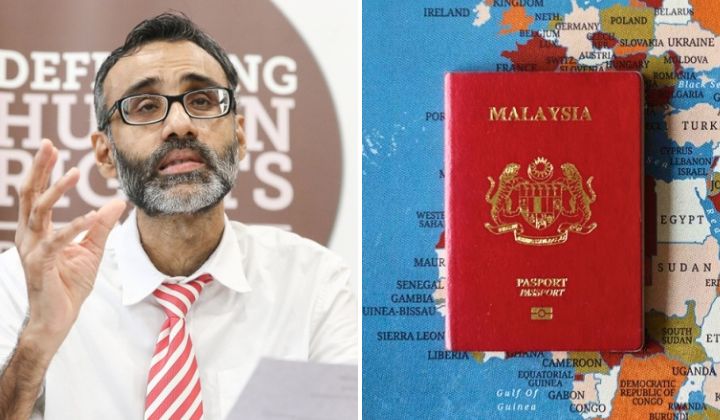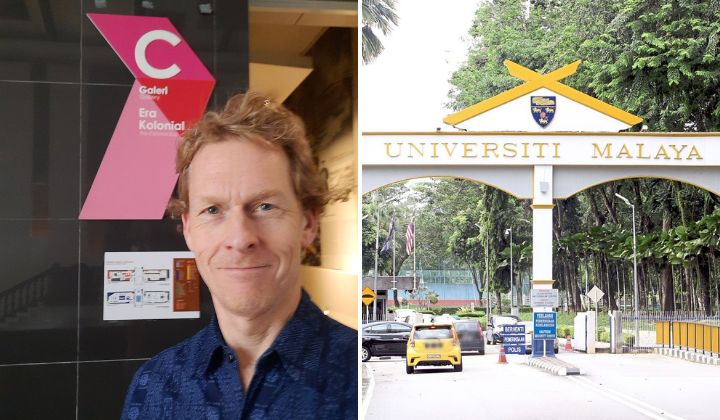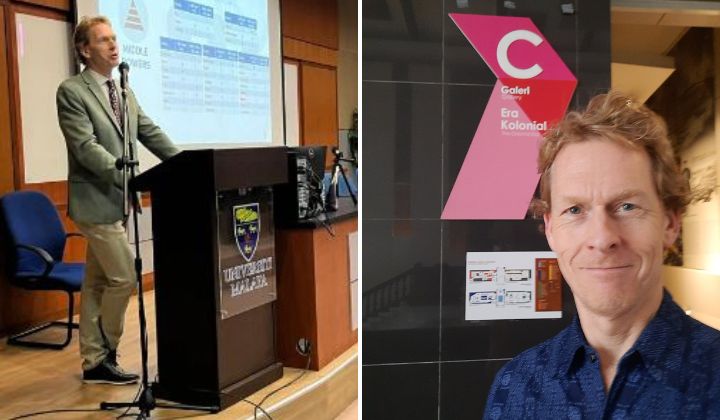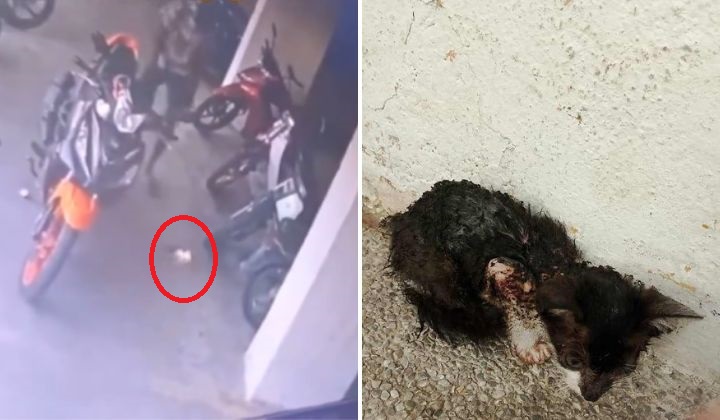Fears Of Coral Reef Destruction With New Airport In Pulau Tioman
Conservationists claim that the new international airport will destroy marine life and wipe out the livelihoods of the locals in the area.
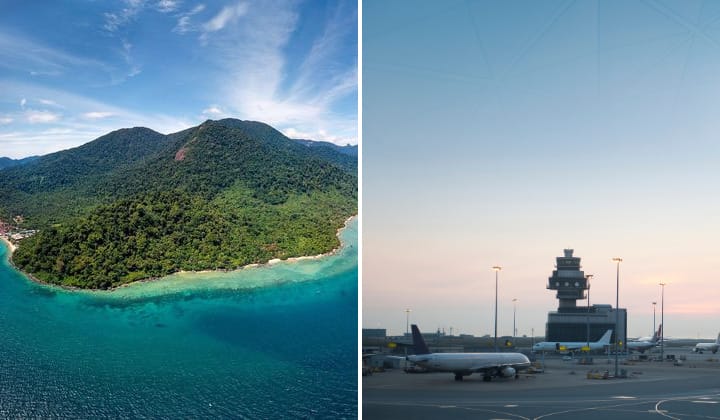
Subscribe to our FREE Newsletter or Telegram channel for the latest stories and updates.
Pulau Tioman is one of Malaysia’s best places to go for scuba diving or snorkelling. Why? Because of the thriving corals, of course. The more corals there are, the more beautiful the view is. As simple as that.
But what if we tell you that there is a proposal to build a huge International Airport on top of the coral reefs? Soon, you may be seeing lots of planes going in and out, instead of the calming and pristine blue sea. Tourists just love seeing planes, right?
What’s happening?
Despite the current small airport, a developer in Tioman is proposing to build a new International Airport encompassing an area of 186.36ha which will take 7 years to construct from 2024 to 2030.
This involves a land reclamation project and 76% (142.70ha) of the development would be done from the sea within the Pulau Tioman Marine Park, a gazetted area. This simply means they would replace the area of the corals by filling it up with sand and other solid materials to build an airport.
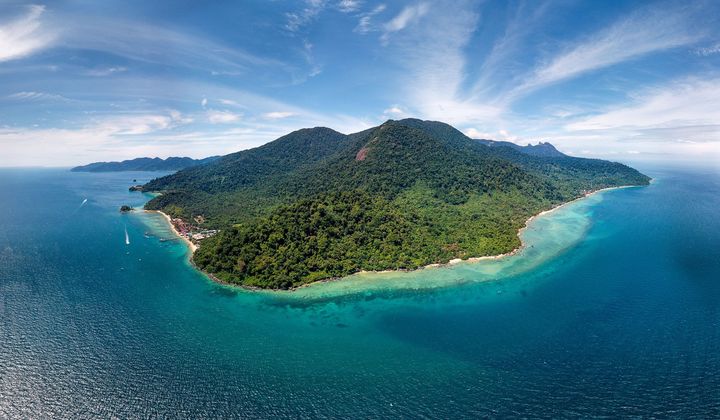
(Credit: Reef Check Malaysia)
The developer prepared a new Environmental Impact Assessment (EIA) report and it is now available for public view before they make any more approvals by 4 August.
This RM120 million budget proposal first came about in 2003 and it was rejected in 2009. With a RM1.2 billion budget, it then again resurfaced in 2018 and was rejected again the same year.
But in 2020, the proposal had mitigation efforts for the affected environmental and social problems and was approved by certain parties in the past few years. The project is now slowly being approved but conservationists still don’t agree with it.
Besides that, Mongabay reports that 54% of 300 island residents support the project. However, most of those residents reside on the northern, most developed part of the island, far from the construction place and close to a large resort linked to the project developer.
On the other hand, representatives surveyed from the two villages that will be affected by the project (Kampung Genting and Kampung Paya) generally oppose the proposal.
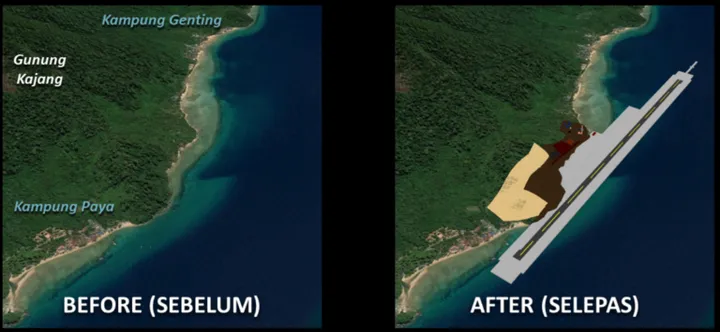
As revealed by Malaysiakini, the EIA report was prepared by Asia Pacific Environmental Consultants Sdn. Bhd. for project developer Tioman Infra Sdn. Bhd., a wholly owned subsidiary of Tioman Hill Resort Sdn Bhd, which is 50% owned by Berjaya Group, a Malaysia-based corporation. The other 50% is owned by the royal family of Pahang through Aimvesco Sdn Bhd and the late Sultan Ahmad Shah.
Benefits vs Drawbacks
Let’s look at some of the pros and cons of the project, shall we? We’ve also inserted the mitigation measures of the EIA and counter-arguments from conservationists. You decide.
Benefits
The logic here is simple. If there’s more development, there’s more money and more economic success for the area. Generally, most construction projects have the same idea.
- Enable larger aircraft to land on the island than the existing small airport.
- Can cater to more than 20 flights per day, including direct flights to and from airports in Malaysia, Asean countries, Australia, India and China.
- Direct flights would offer tourists an easier and faster way to reach the island.
- Inevitably will welcome more tourists to the area, generating more tourism.
- Promote ‘sustainability’.
- Have an income multiplier effect once tourism is fourfold. It would help locals with job opportunities too.
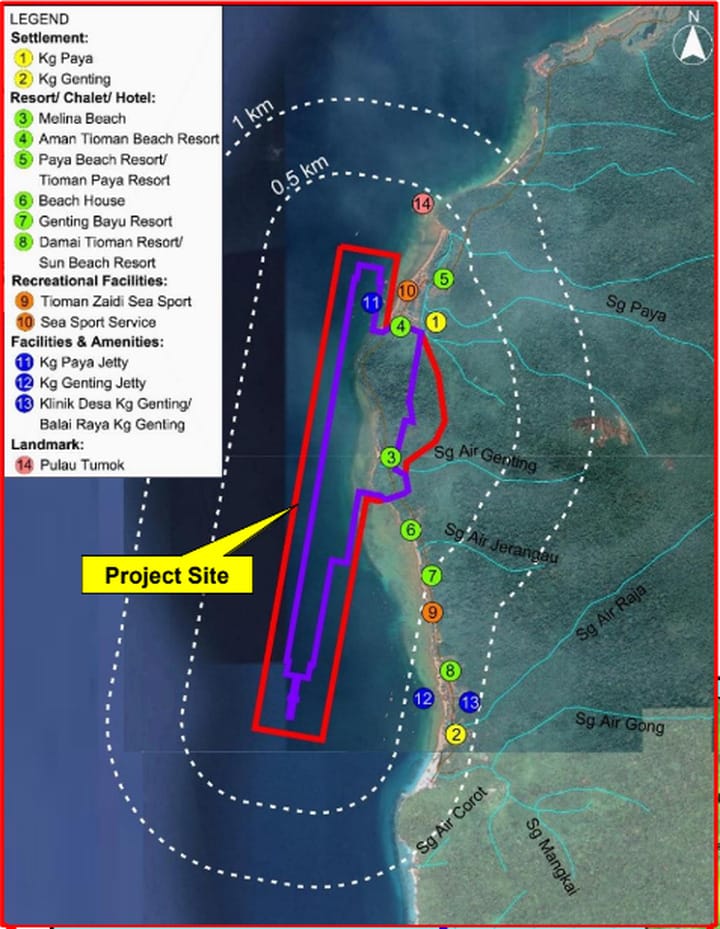
(Credit: Reef Check Malaysia)
Drawbacks
But more money doesn’t necessarily mean the environment is taken care of, especially during heavy construction. Here are some of the potentially serious environmental and social impacts of the project.
- 120 species of hard corals and 12 species of soft corals in the area would be destroyed.
- Artificial lighting during the construction would disrupt marine life such as coral photosynthesis, migration patterns, reproduction activities and more.
- Underwater construction noise would distress aquatic life and affect their mating pattern, behaviour and more.
- Pollutant runoff from the development site and plumes of silt and sediment.
- The development could displace local businesses, extinguishing tourism revenue in two of the island’s seven villages.
- During the construction for 5-7 years, not many tourists would come and the locals would be deprived of their income.
Mitigation measures
These are some of the mitigating measures that the developer addressed.
- Relocation and propagation of corals by creating four relocation sites and two coral farms before construction begins.
- Offering tax reductions to resort operators and local tourism businesses to compensate for potential socioeconomic impacts for five years.
- Having a ‘controlled’ development during the 7-year construction.
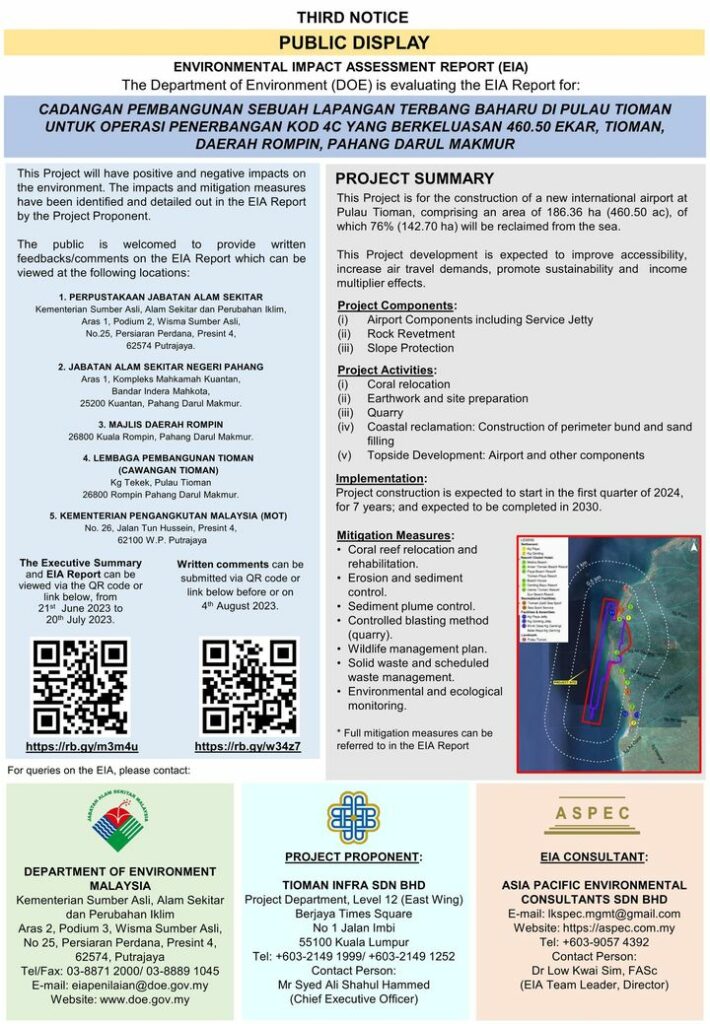
Counter Arguments
Fact: Corals are very fragile beings and are sensitive to local environmental conditions. Warmer water temperatures, sedimentation, nutrient runoff, and heavy metal pollution are just some of the factors leading to the destruction of coral reefs worldwide.
READ MORE: Did You Know That Corals Are Animals? Here Are 10 Fun Facts About Them
- There are various studies which say relocation of coral reefs doesn’t always work.
- Land reclamation and quarrying processes would destroy marine life as current could carry sediments over to existing surrounding reefs and they would die.
- When the airport starts running, the runoff of pollutants and plane fuel would cause another environmental damage too.
- Mass tourism would shift businesses away from small-scale locally managed resorts to larger resorts that would spring up, which could take revenues and jobs away from local people.
- Large resort owners would often employ staff from outside the island, eventually reducing the opportunities for the local islanders to work.
What locals & conservationists suggest
Alvin Chellian, a Programme Manager for Reef Check Malaysia and a resident of the island said that the island doesn’t currently have adequate infrastructure and facilities to support the influx of tourists the new airport is going to bring. They think it’s wise to focus on developing the island’s jetty, drainage, waste treatment and power services first.
To generate more tourism, many suggest upgrading the existing airstrip to accommodate larger planes from regional hubs, such as Kuala Lumpur and Singapore.
Mogesh Sababathy, Co-founder of Project Ocean Hope also expressed his worries with the upcoming project. He has been advocating for the environmental impact of the project through many channels, one of them being through newspaper articles.
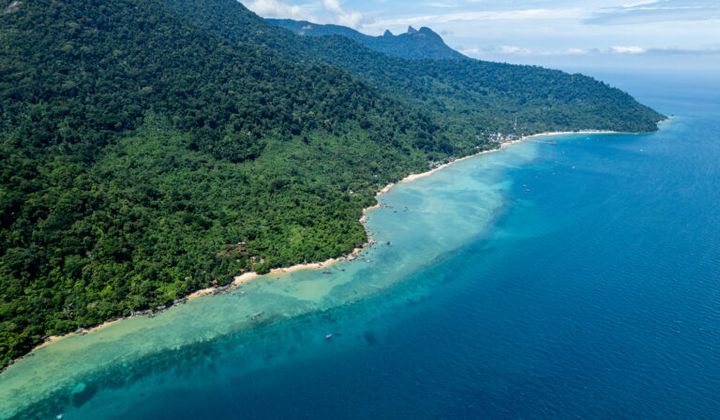
(Credit: Reef Check Malaysia)
He also told us that the long-term sustainability of the island should not be compromised for immediate economic benefits. He suggests the developers prioritize comprehensive and sustainable measures that protect the island’s natural resources, promote responsible tourism practices, and invest in the development of alternative industries that are less detrimental to the environment.
Choosing the environment over financial gains may seem counterintuitive in our profit-driven world, but neglecting our environment will have far-reaching consequences.
Mogesh Sababathy, Co-founder of Project Ocean Hope to TRP
As reported by FMT, Julian Hyde, a General Manager for Reef Check Malaysia said that the EIA report is flawed because it is based on the presumption that whatever impacts that were identified can be mitigated. He is not convinced that is correct and he thinks it only favours the developers.
Examples of other places in the world that suffer from uncontrolled tourism expansion are Boracay Island in the Philippines (shut down for six months in 2018 after it became a cesspool filled with untreated sewage) and Maya Bay in Thailand (closed in 2018 due to a massive rehabilitation program).
They eventually opened again with a cap for visitors, but they had to go through immense environmental damage first.
What tourism means when we talk about Tioman Island is its beautiful natural resources.
Julian Hyde, Reef Check Malaysia’s General Manager
Developing tourism cannot exclude the protection of the natural environment.
What is the minister saying?
As reported by Malaysiakini on 14 July, the Minister of Natural Resources, Environment, and Climate Change, Nik Nazmi Nik Ahmad is reserving his comments on the proposed issue until his ministry has combed through the project’s EIA report.
He said that the proposed project is located under a “crucial” marine site, which would require detailed and careful observation.
I think the main priority is to protect the environment in Tioman.
Nik Nazmi Nik Ahmad, Minister of Natural Resources, Environment, and Climate Change
It’s a crucial marine site, so we will go through the EIA in detail and very carefully.
As soon as possible.
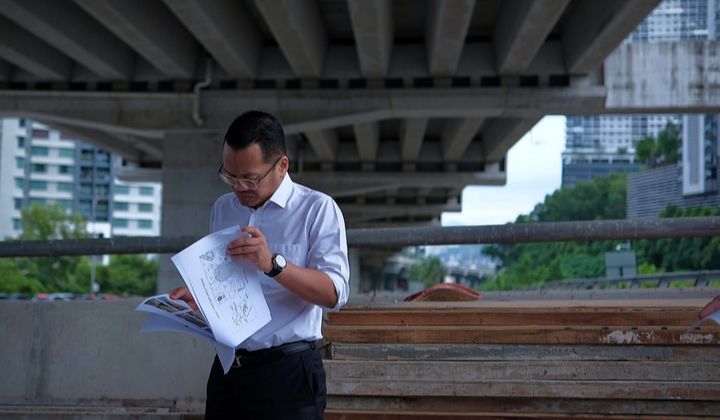
Besides that, according to Utusan Malaysia, Malaysian Democratic Alliance Party (Muda) Policy Bureau analyst, Noor Fadzli Shah Noor Hashim believes that the minister responsible should visit Tioman Island and see for himself the real situation there.
They shouldn’t just analyse the report by itself but should send a professional team to assess the situation.
He also stated that many NGOs have talked about this problem but it is still taken lightly after several years.
“Muda is ready to discuss and also work with stakeholders to see if the policies that are being used now are still relevant to overcome and facilitate the crisis of this issue,” he told Utusan Malaysia on 21 July.
What you can do to help?
Unfortunately, the duration for the EIA report to be made public is already over (21 June – 20 July). However, the report is open for the public to comment until 4 August.
As concerned individuals, we have the power to make a difference. The clock is ticking, and our voices are the only weapon we have in this battle.
Mogesh Sababathy, Co-founder of Project Ocean Hope to TRP
It’s a crucial time for concerned individuals to voice their opinions and provide feedback during the public comment period of the EIA report.
Given that you already have a grasp on what’s happening, you can voice out your opinions regarding the matter on their Public Feedback Form here. And don’t worry about the organization column, you can just write “Individual” or “N/A” to indicate you’re providing feedback as private citizens rather than representing groups, institutions or companies.
For more info regarding the matter, follow Reef Check Malaysia as they have been thoroughly posting updates about the issue on their Facebook page.
Watch the video here to listen to what the locals there have to say.
Alternatively, you could also sign the petition initiated by Reef Check Malaysia to stop this development here.
“By signing the petition, we can collectively demand opposition to the development proposal, call for Members of Parliament to address the issue in Parliament and request the formation of a task force or subcommittee, and advocate for stricter legislation and improved mechanisms for future development proposals with thorough EIA oversight involving CSOs/NGOs and the local community,” explained Mogesh to TRP.
Currently, it has around 18K signatures since the petition started on 23 June. You can simply sign the petition, donate some money to the cause, or just share the ongoing petition with your friends and family on social media or through direct messages. The more people are in the know, the better.
Yes, we do want Malaysia to be a developed country, but not to the detriment of our natural environment. Look at what climate change is doing to us today. Flash floods, heat waves, severe storms, increased drought, less food yields, increased health risks and many more. What’s the use of a developed nation if we’re all gonna vanish at the hands of turbulent mother nature in the future?
Make smart and informed decisions, everyone. Our voices matter.
READ MORE: Help Coral Reef Restoration By Watching This Short Video
READ MORE: Malaysian Ecologist Jillian Ooi Receives US$150,000 Pew Grant To Save Local Seagrass Meadows
READ MORE: M’sia Is Running Out of Seafood, And It’s All Your Fault
Share your thoughts with us via TRP’s Facebook, Twitter, Instagram, or Threads.

